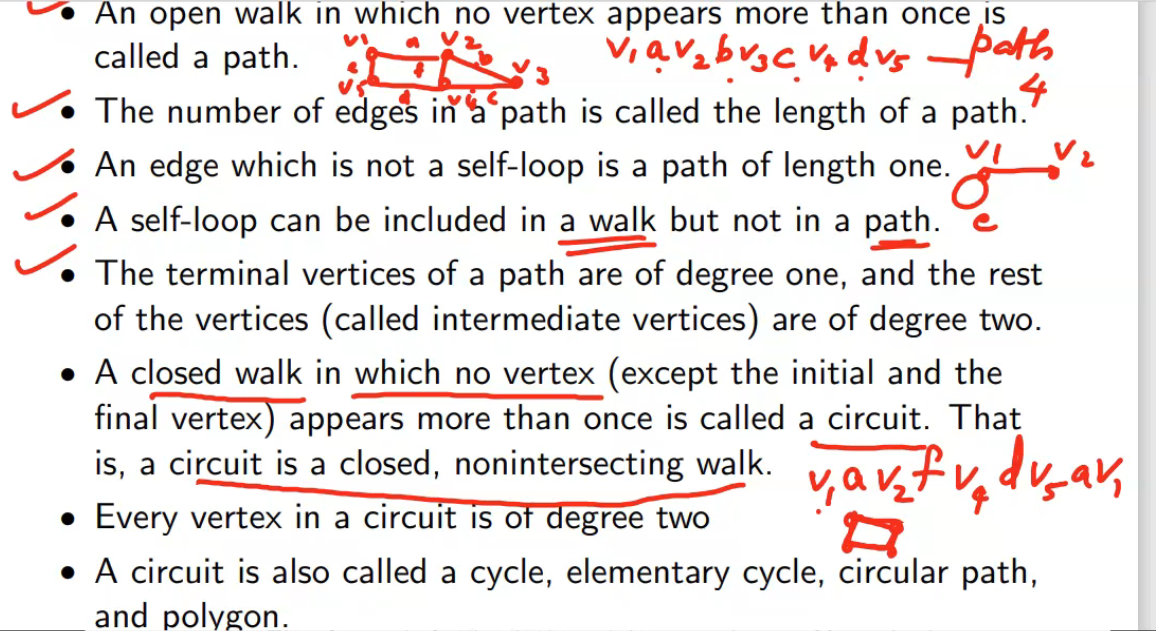examples of a non isomorphic graph
![isomorphicandNonIsomorphicGraphs][./img/isomorphicandNonIsomorphicGraphs.png]
Two isomorphic graphs must have
- the same number of vertices
- the same number of edges
- an equal number of vertices with a given degre.
- Same degree sequence.
| These conditions are not sufficient | There are non-isomorphic graphs which satisfy all these conditions. |

A graph H is said to be a subgraph of a graph G if all the vertices and all the edges of H are in G, and each edge of H has the same end vertices in H as in G. We denote it by

An open walk in which no vertex appears more than once is called its path.
-
the number of edges in a path is called the length of a path
-
A self-loop can be included in a walk but not in a path
-
The terminal vertices of a path are of degree one, and the rest of the vertices (called the intermediate vertices) are of degree two.
-
A closed walk in which no vertex(excep the start and end) appears more than once is called a circuit. It is closed nonintersecting walk. -
Every vertex in a circuit is of degree two.
- A circuit is also called a cycle, elementary cycle, circular path and polygon.
